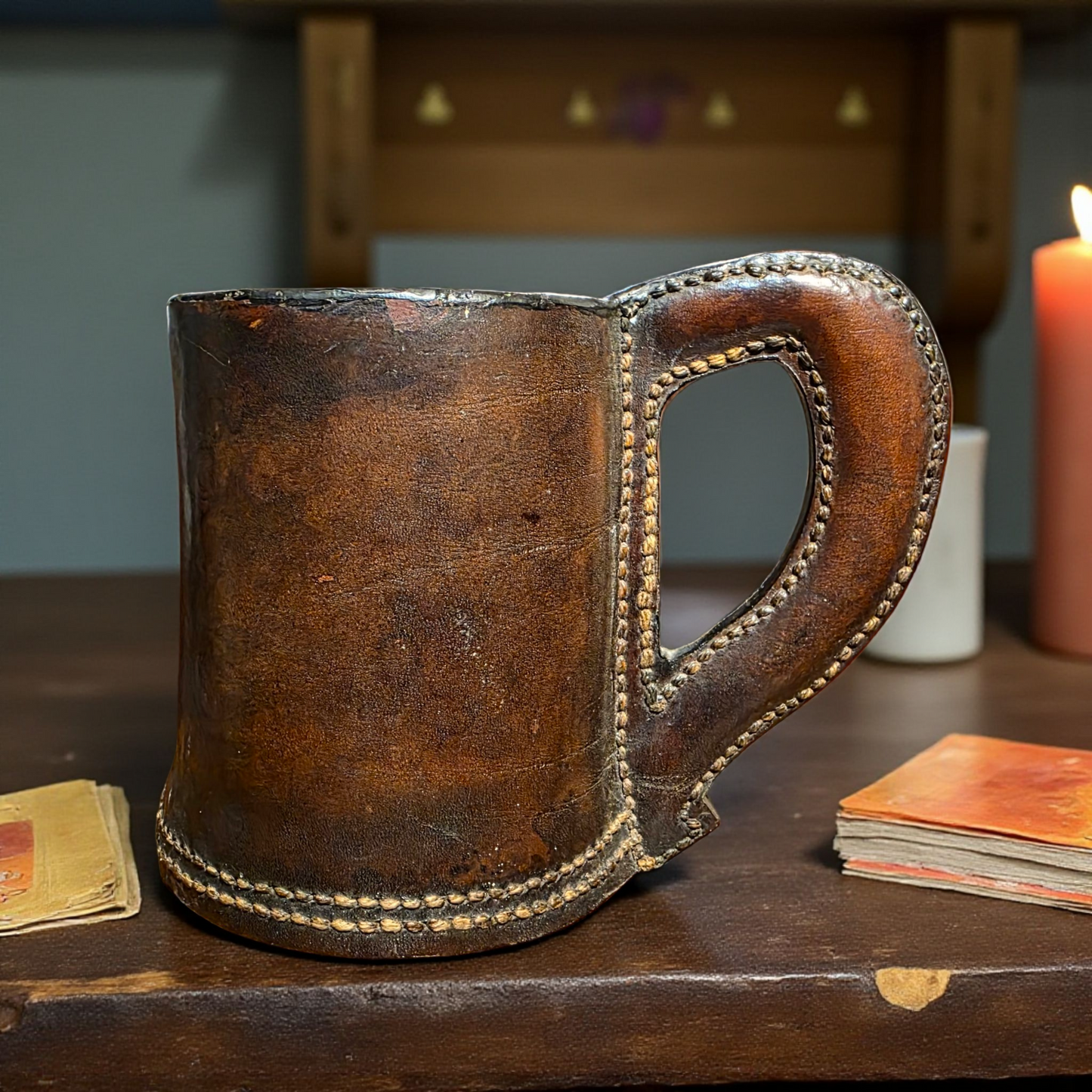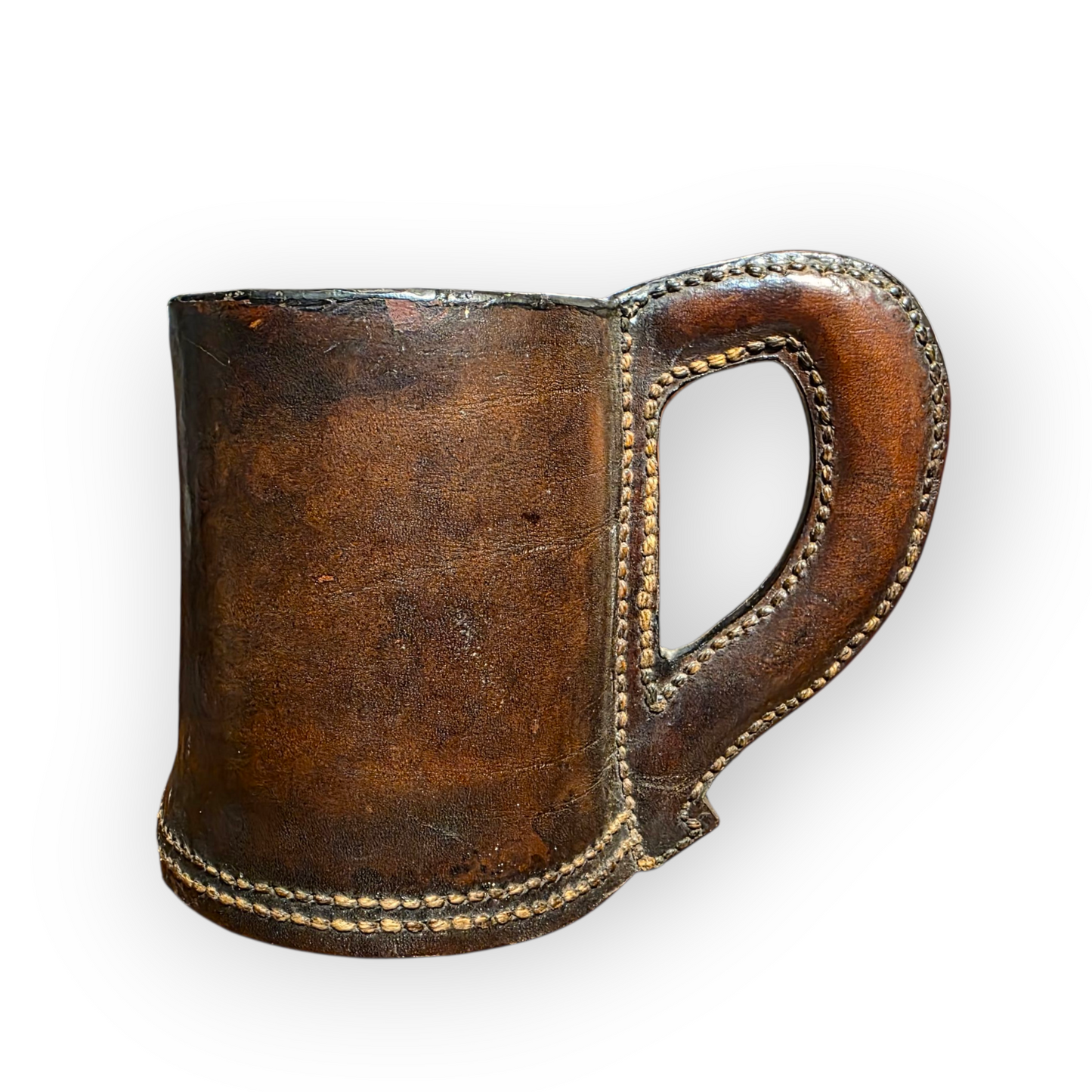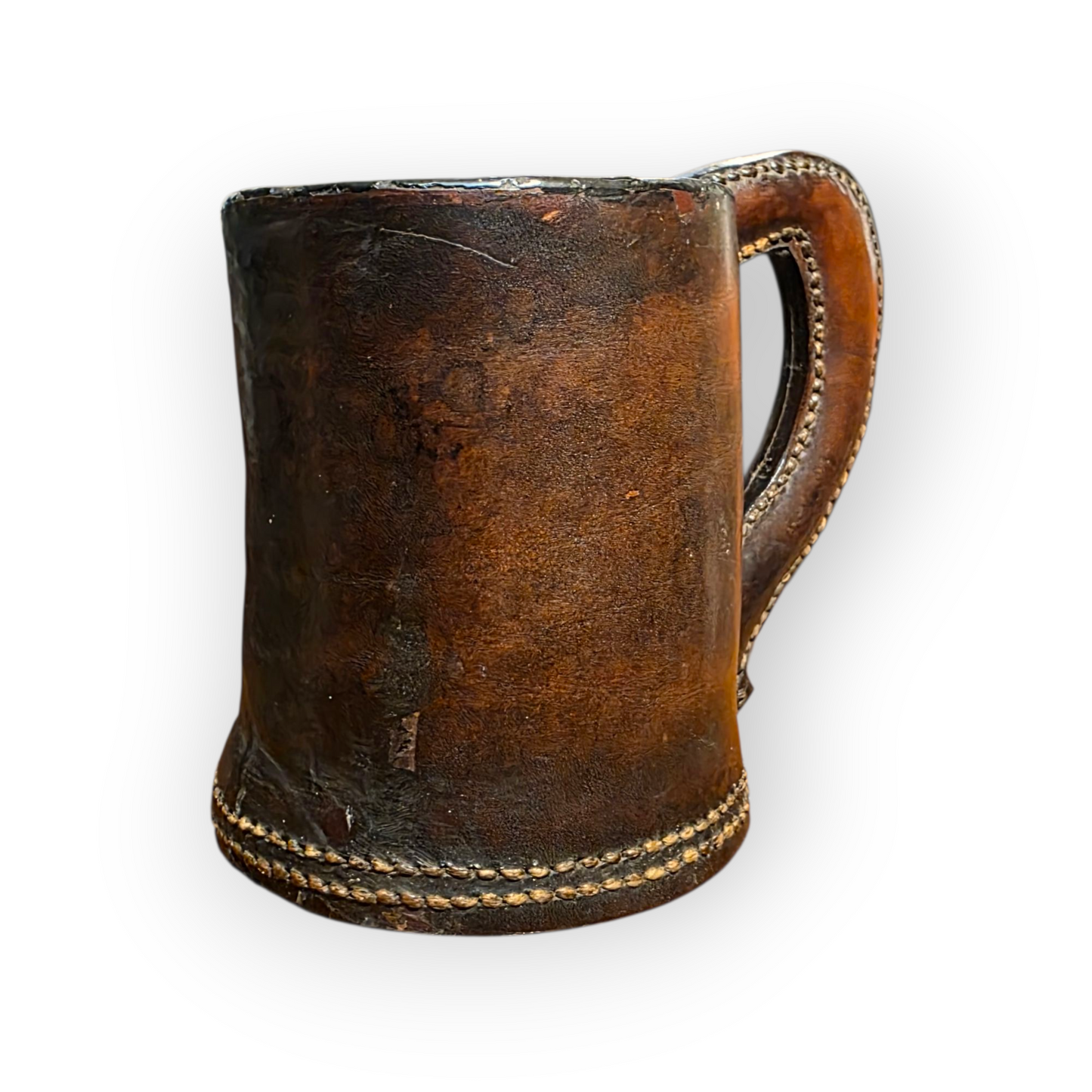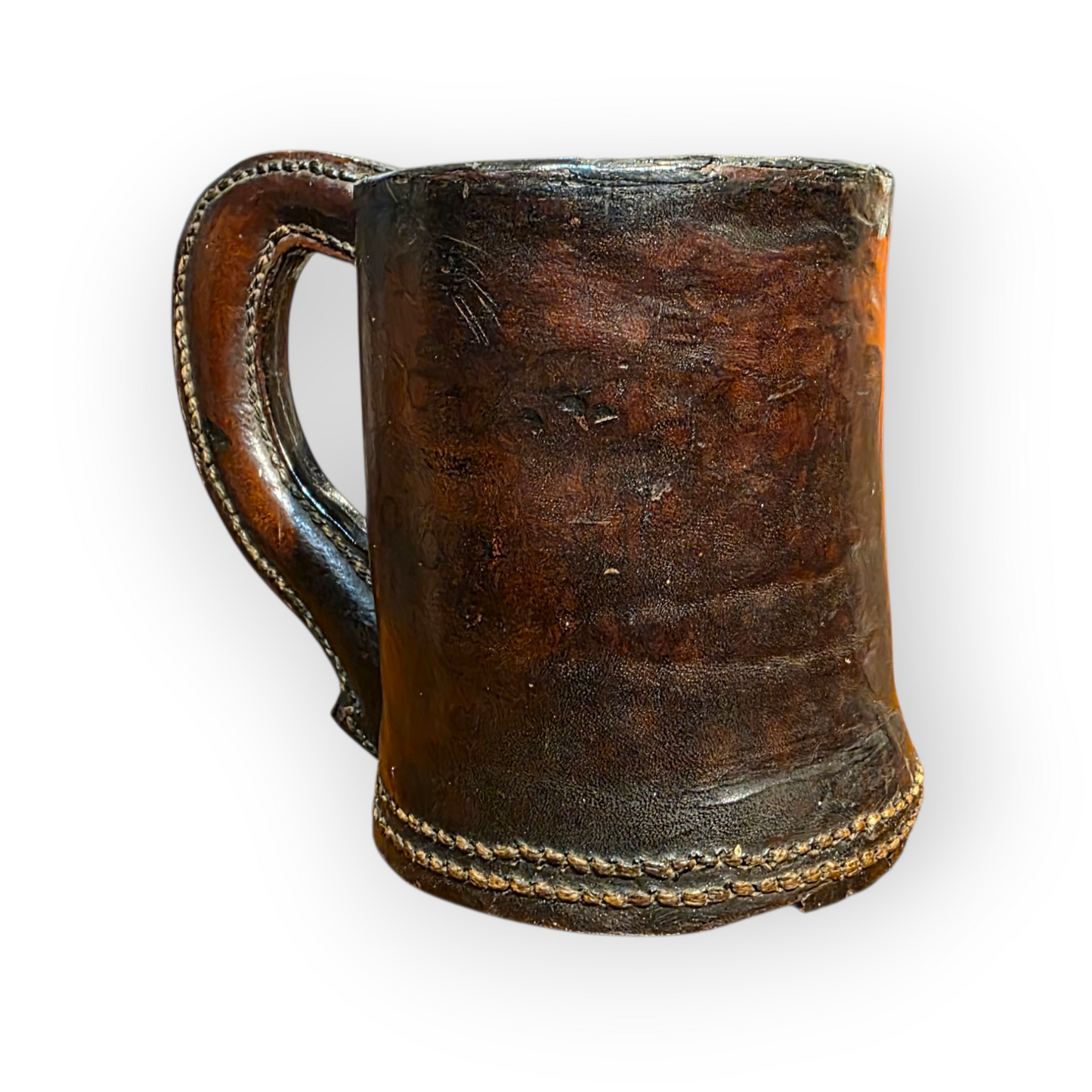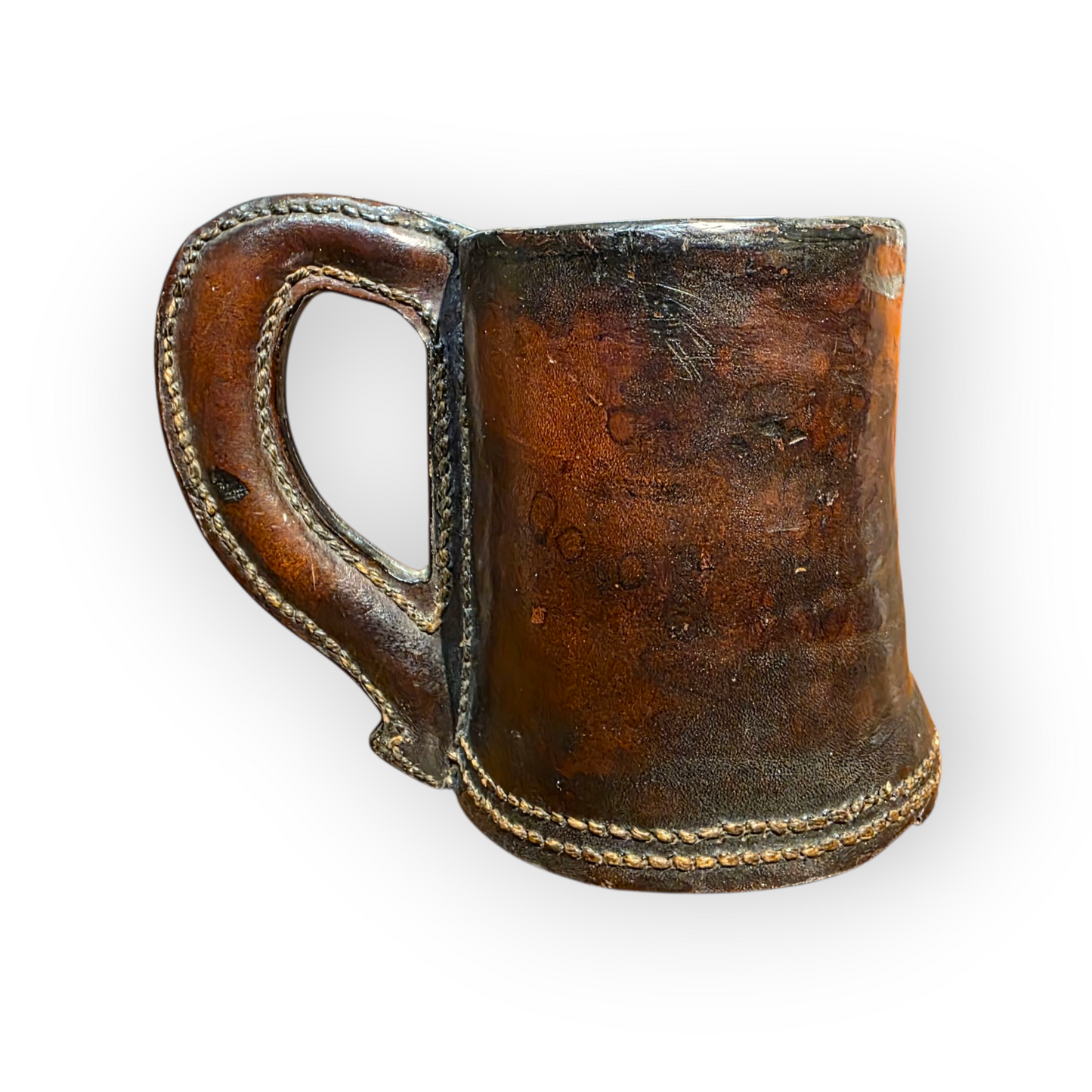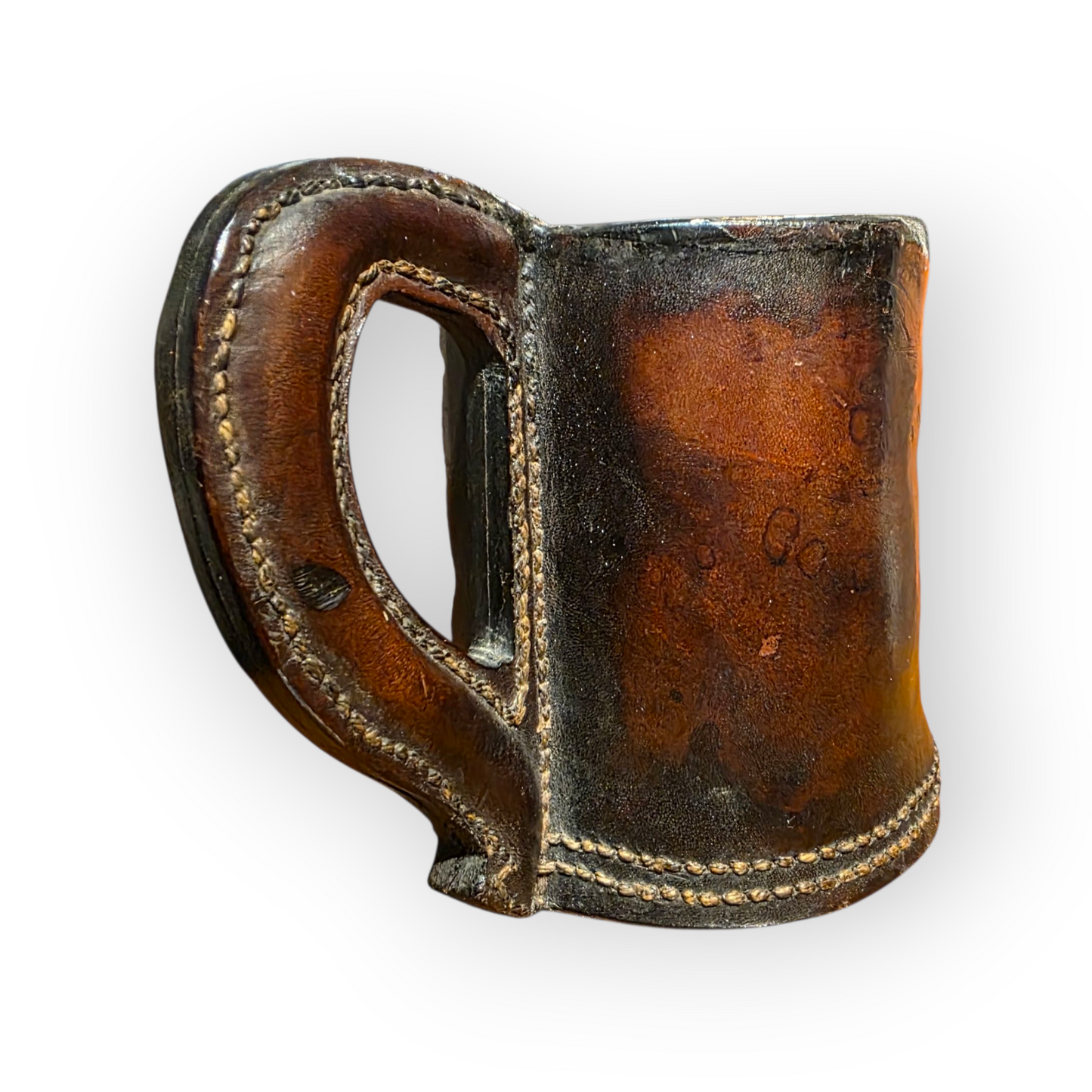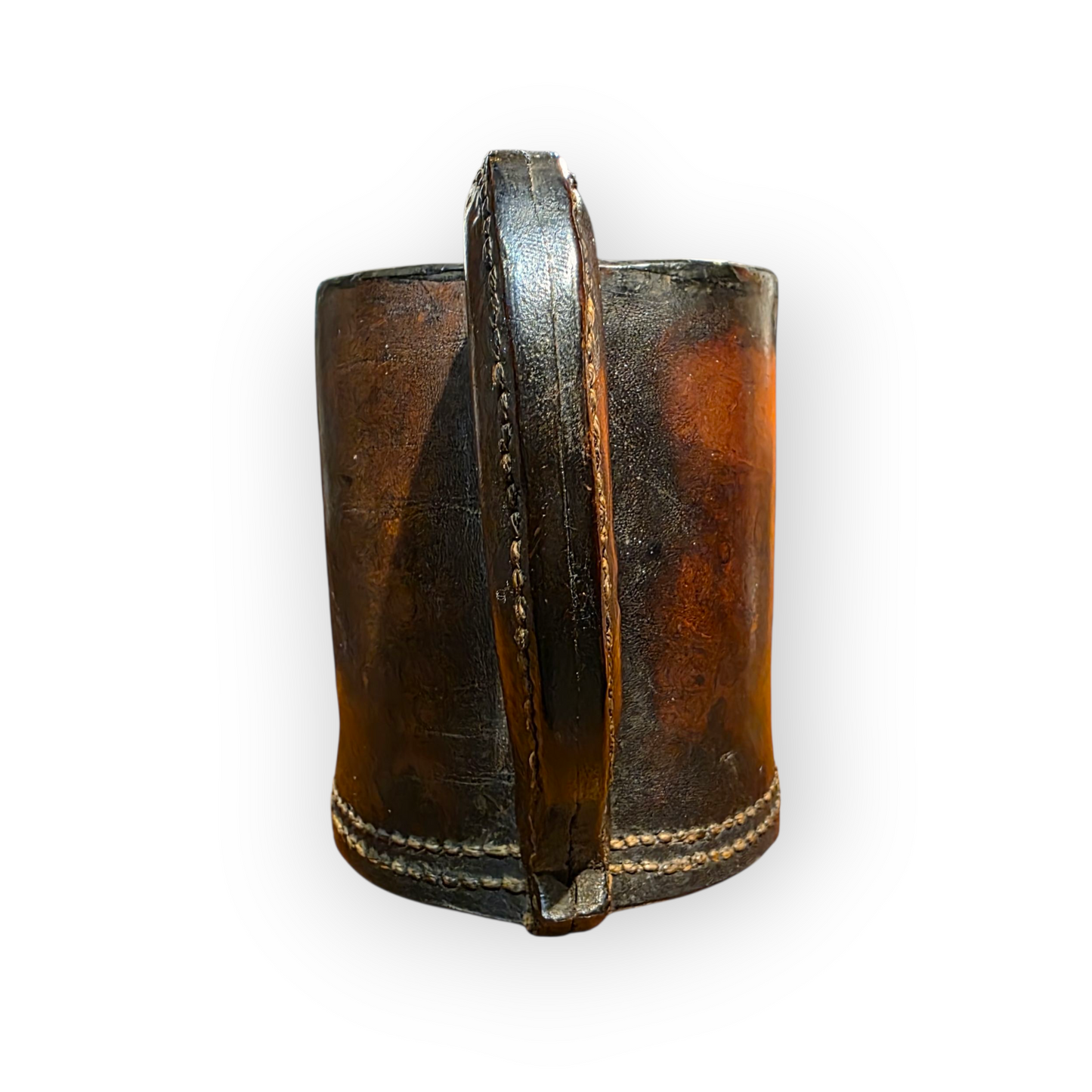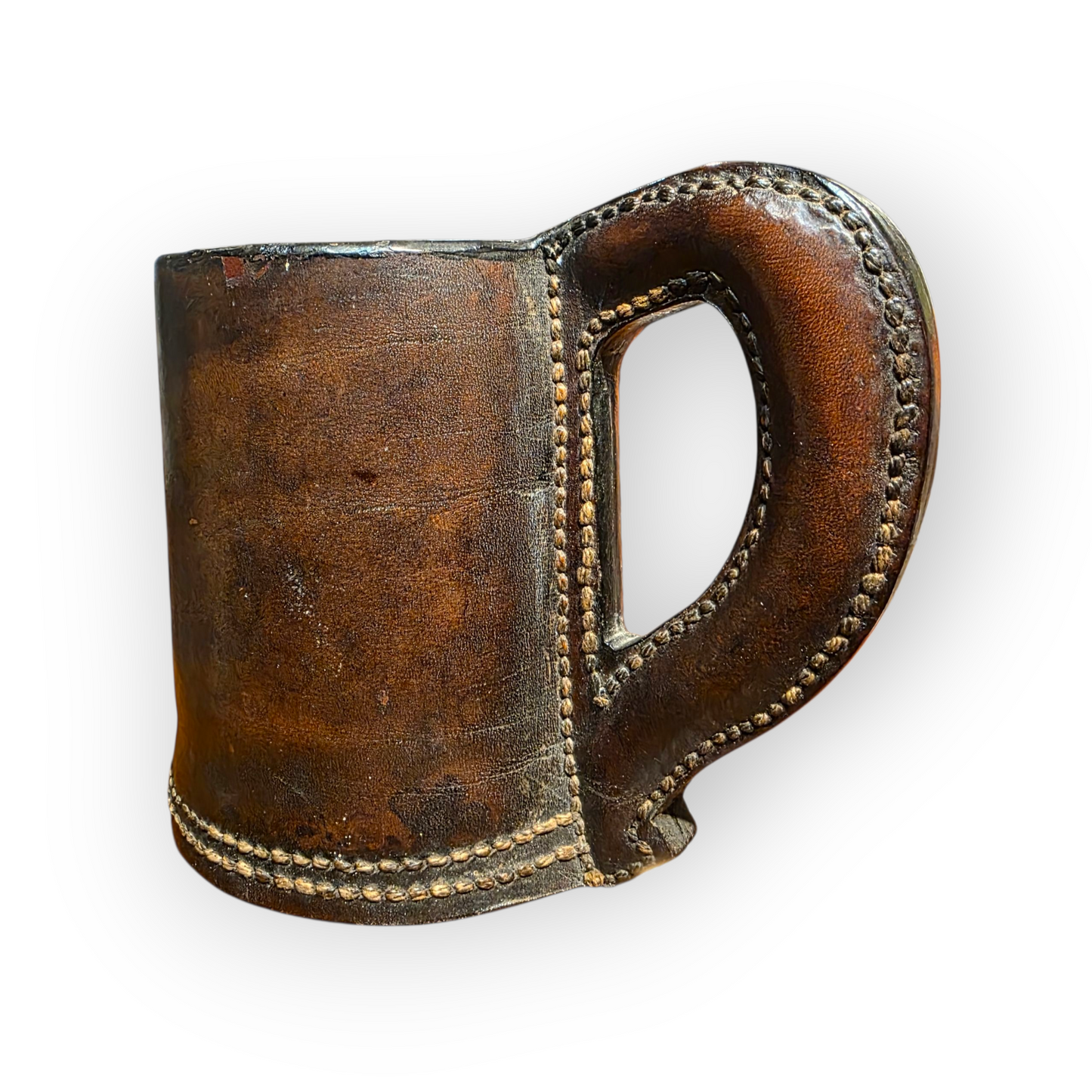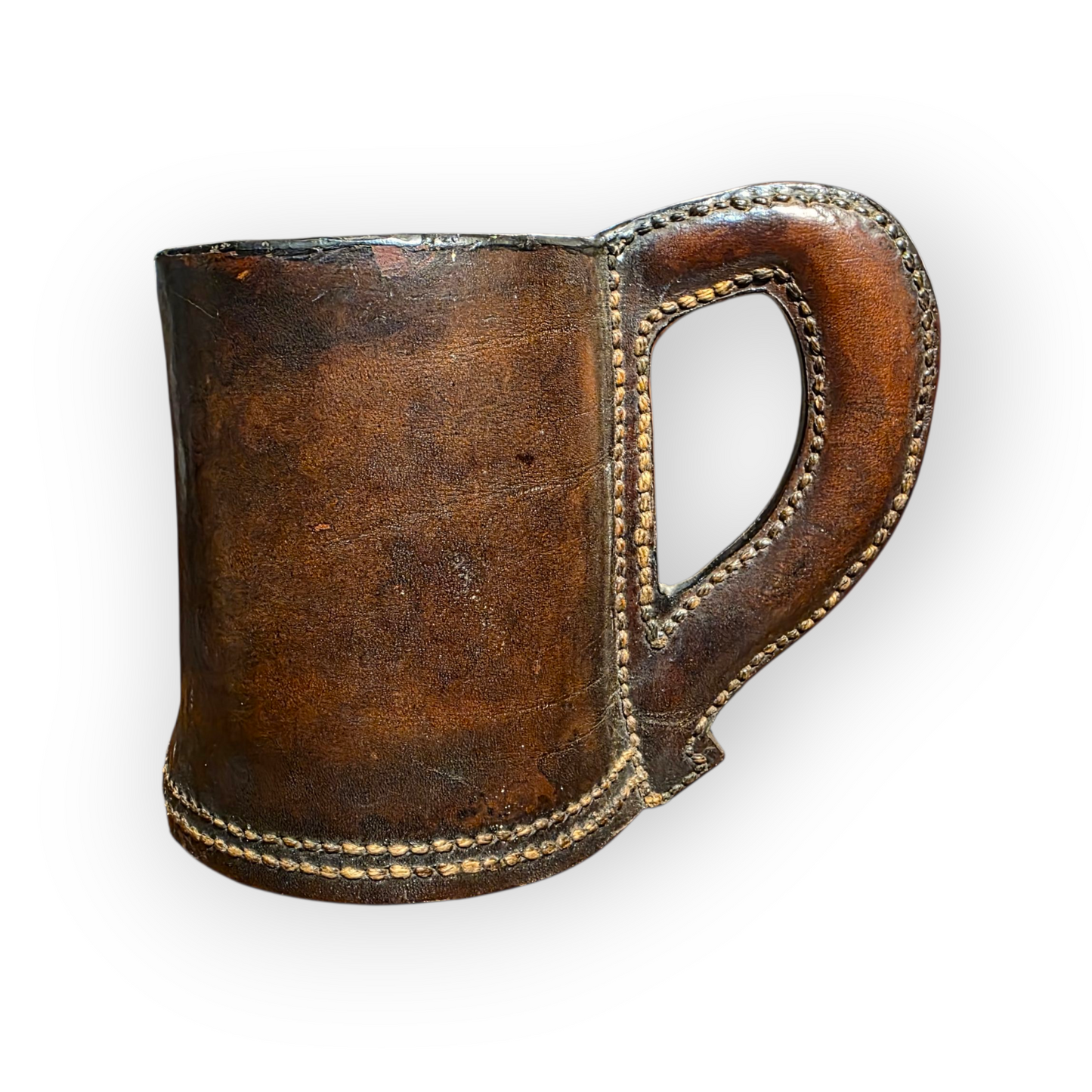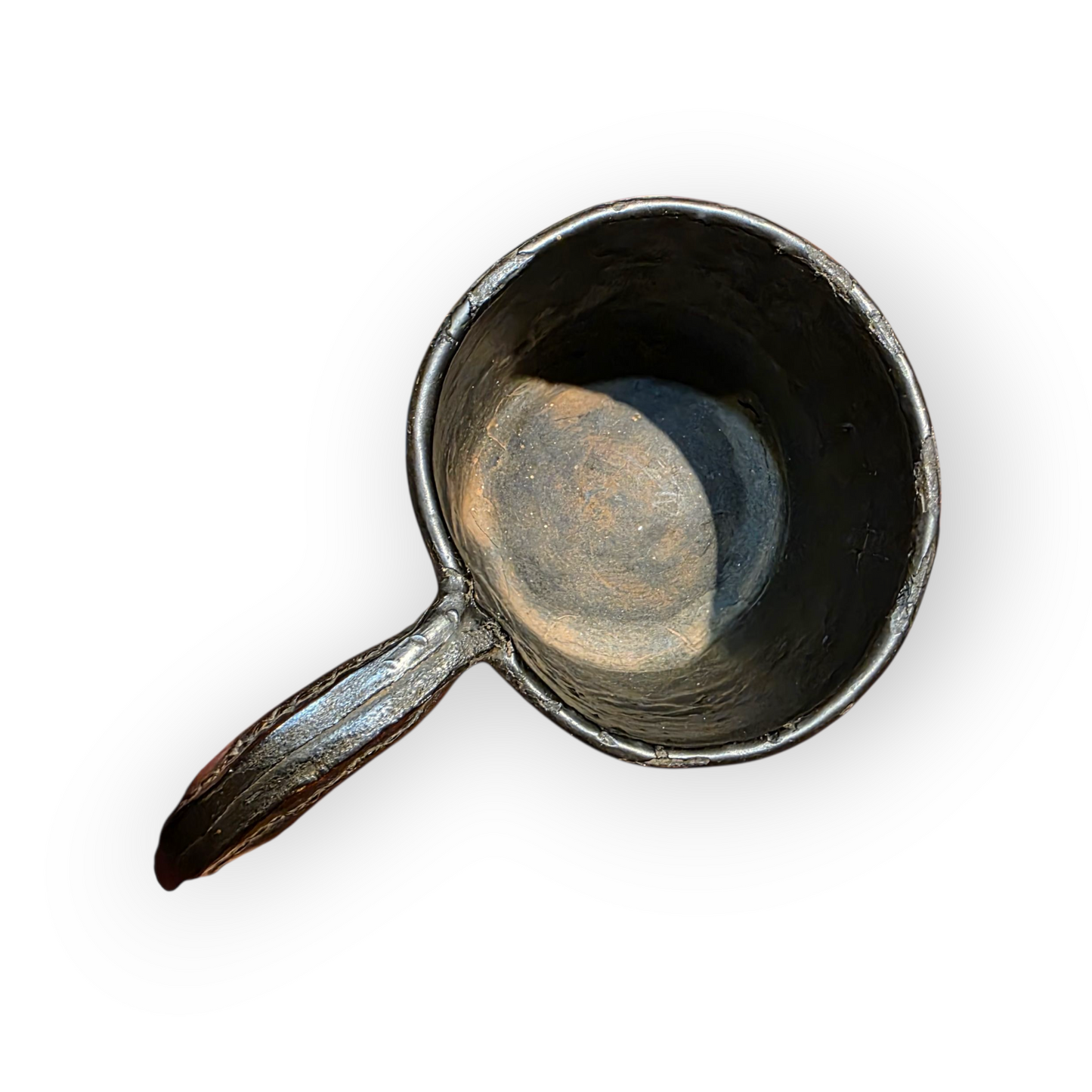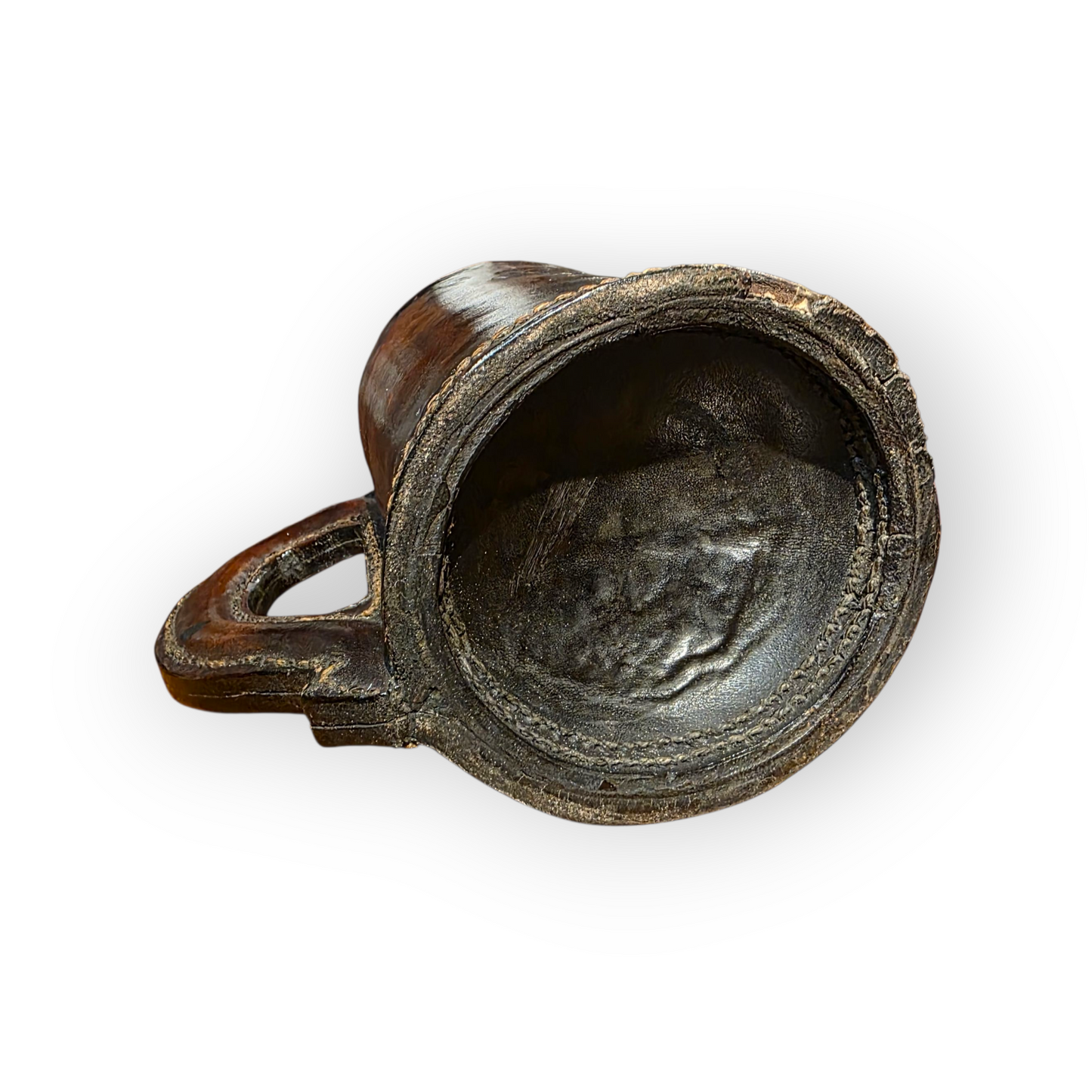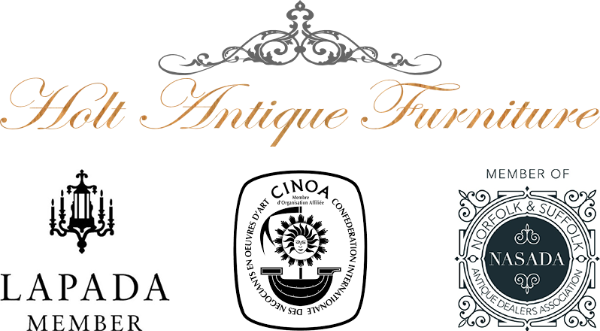Holt Antiques at Walsingham Mill
Late 18th-Century English Antique Leather Blackjack Tankard
Late 18th-Century English Antique Leather Blackjack Tankard


Couldn't load pickup availability
This object is a handsome example of an English Blackjack or leather tankard, likely dating to the late 18th Century or possibly slightly earlier.
The tankard is of a tapering cylindrical form, crafted from thick, dark brown leather. The leather has a rich, aged patina that gives it a deep, almost black colour in places, with a slightly textured, worn surface characteristic of long use. The body and base are constructed of stitched leather, visible by the decorative, tightly-stitched, light-coloured or contrasting thread that outlines the base and the edges of the substantial, curved handle. This decorative stitching provides both structural integrity and a distinctive aesthetic.
Formed from wet leather shaped over a mould, historically, these vessels were made watertight by being lined on the interior with a coating of pitch, resin, or wax, which often contributed to their dark color. This particular tankard, with its simple, robust form and stitched construction, reflects the traditional craftsmanship used for centuries for these durable, practical drinking vessels.
History of the Name "Blackjack":
The name "Blackjack" for this type of leather drinking vessel has a few related theories concerning its origin, all pointing to the materials and function:
1. Pitch Lining: The most widely accepted explanation is related to the waterproofing. The interior of the leather vessel was coated with black pitch (brewer's pitch, pine resin, or similar tar-like substance) to make it watertight. This black coating made the container, particularly the inside and often the outside, "black", and the type of leather vessel was commonly called a "jack" (a medieval term for a leather jug or a type of stiff leather). Thus, the name "Blackjack."
2. Jack Leather: The term "jack" was also applied to leather itself that had been specially treated by being boiled or soaked in hot water and dried, resulting in a stiff, hard material suitable for armor (like a "jack of plate") or drinking vessels. This "jack leather" when darkened by use or pitch became the "Blackjack."
3. Contrast with Bombards: The smaller, tankard-shaped vessels like the one pictured were generally called "Jacks," while larger, often pear-shaped pouring jugs were called "Bombards." Both were commonly black from the pitch lining.
Provenance - Ex-private collection, Norfolk, England.
Condition - Good overall. There is age-related surface wear. Please refer to the images.
Size - 5 inches / approx 12.7 cm
🚚✈️🚢 We ship worldwide!
You can buy with 100% confidence too!
We are a member of the following 4 Professional Associations:
1. LAPADA (London and Provincial Antique Dealers Association) – LAPADA is the UK’s largest trade association for professional art & antique dealers (representing approximately 500 UK dealer members). All items are backed by our LAPADA guarantee;
2. CINOA –Confédération Internationale des Négociants en Oeuvres d'Art, (or International Confederation of Art and Antique Dealers' Associations) is the world association of art & antique dealer associations (representing 5000 dealers from 32 associations in 22 countries);
3. The Norfolk & Suffolk Antique Dealers Association - Representing reputable, high quality antiques dealers based in Norfolk and Suffolk; and
4. FSB - Federation of Small Business.
Wish to purchase this item?
1. Buy online via this website; OR
2. Tel: 00 44 7551 383897 (line open 9.30 am to 5.30 pm Monday to Saturday UK time) where we can take payment over the phone.
Want further information about an item or wish to discuss shipping costs?
1. Email us via this website; OR
2. Email us via:
info@holtantiquefurniture.com
We will aim to respond and make contact with you within 24 hours of receipt of your enquiry.
🚚✈️🚢 Shipping & Customs Information
Please Note: Prices shown exclude customs clearance fees. Where applicable, these charges will be levied directly by your receiving courier, designated importer, or local government authority. These fees vary by destination and are the responsibility of the buyer. For guidance on potential charges, we recommend contacting your local customs office prior to purchase.
Share
